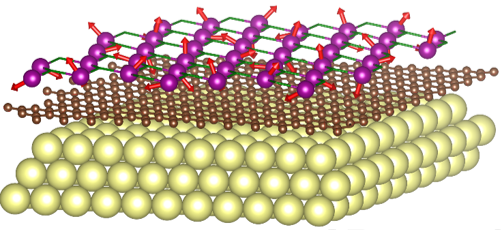Does altermagnetism persist at the 2D limit?
Altermagnetism, a newly established symmetry-based class of magnetic order beyond conventional ferromagnetism and antiferromagnetism, has rapidly emerged as a central research topic in condensed matter physics. Notably, 3-dimensional (3D) MnTe has become a benchmark material where altermagnetic manifestations and consequences have been shown in the last couple of years.
In this work, a team of scientists from IMDEA Nanociencia, Materials Physics Center (CSIC – EHU), Universidad Autónoma de Madrid, IFIMAC and ALBA Synchrotron address a fundamental open question in the field: Does altermagnetism persist down to the 2D limit? To answer this question, they have employed a comprehensive experimental and theoretical approach that combines scanning tunneling microscopic and x-ray circular magnetic dichroic measurements of atomically thin MnTe monolayers and bilayers grown by molecular beam epitaxy, with DFT.

The team has shown that when thinned to the monolayer and bilayer limit, MnTe adopts crystal symmetries incompatible with the emergence of altermagnetism. Instead, the bilayer becomes a remarkably more robust layered antiferromagnet and the monolayer forms a frustrated magnetic phase exhibiting a behavior consistent with that of a spin-glass—a phase never observed at the atomic limit. These findings reveal how symmetry breaking and frustration-induced magnetism in 2D MnTe give rise to magnetic states distinct from its 3D altermagnetic behavior, with implications for engineering nontrivial spin textures in low-dimensional materials.
Original Article:
Emergent Magnetic Structures at the 2D Limit of the Altermagnet MnTe



